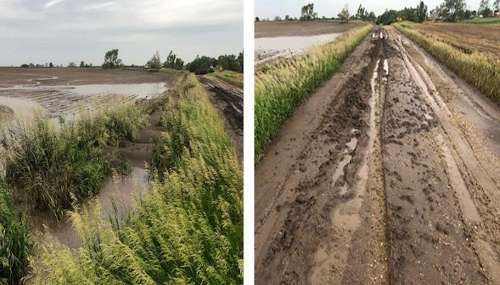By David Kringen
On June 8-9, 2020, a severe weather system moved across Southeastern South Dakota producing heavy rainfall, high winds and hail. According to the National Weather Service, the prolonged nature of the event was driven by Tropical Depression Cristobal, which lifted north along the Mississippi River Valley on these 2 days before eventually turning northeast towards the Great Lakes Region. This south-north moving system blocked the weather pattern from its normal progression and resulted in storms tracking through the areas west of Interstate 29 from the evening of June 8 through the afternoon of June 9.
This extreme weather event damaged trees, power lines, and buildings in the area. Damage to unprotected cropground was also documented in some areas as well. A combination of tillage, no residue, and lack of crop canopy can lead to severe erosion and topsoil loss in the face of extreme weather patterns in the spring. The most effective strategy for producers to adapt to these extreme events is to improve soil health.

A combination of wind and water erosion has resulted in severe topsoil loss in this field after the latest extreme weather event. According to the NRCS Soil Conservationist, the no-till field next to it had no noticeable soil loss.